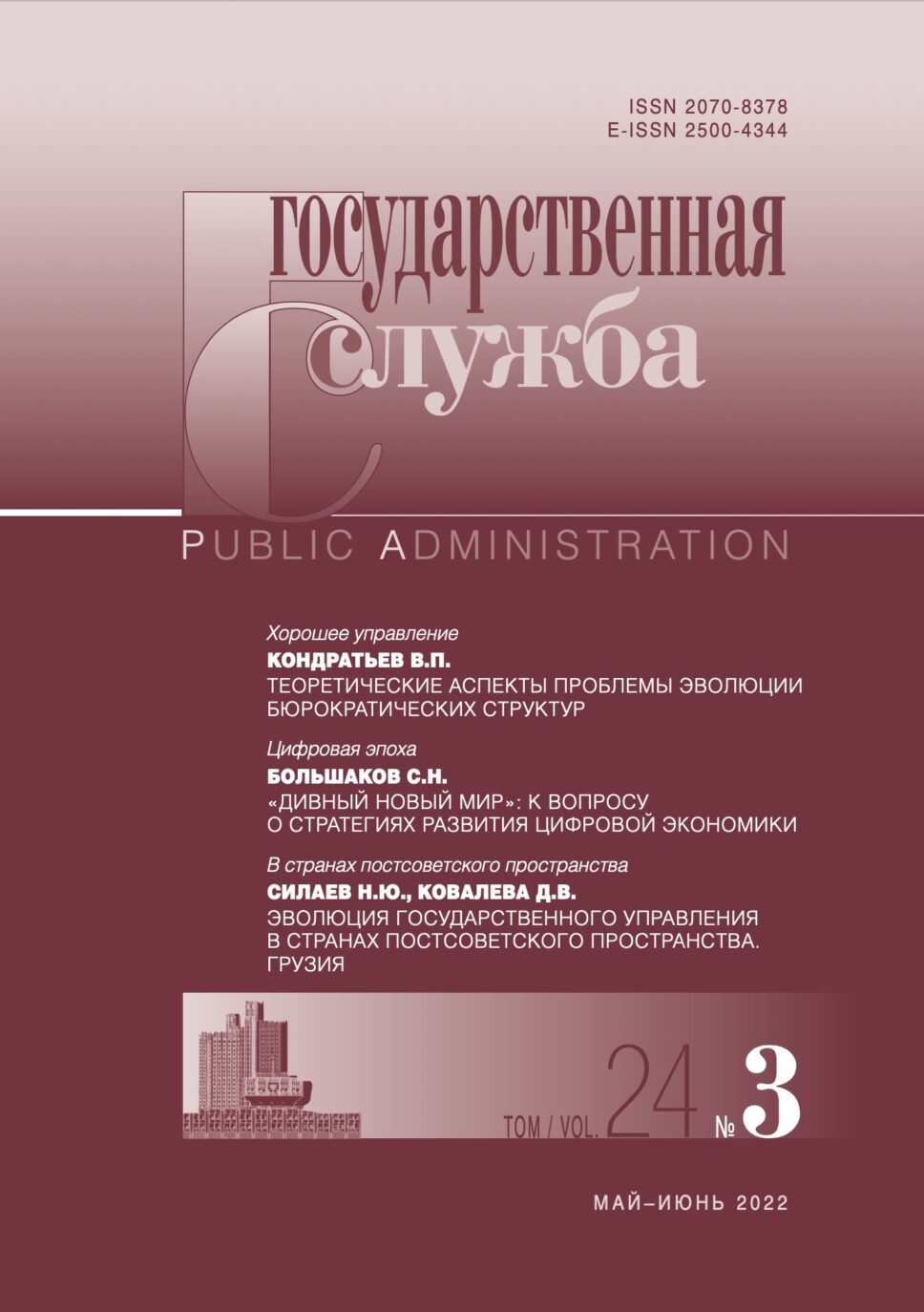Recommended link to article:
VLADISLAV PAVLOVICH KONDRATIEVа
аCentral Russian Institute of Management – a branch of the Russian Presidential Academy of National Economy and Public Administration
DOI: 10.22394/2070-8378-2022-24-3-6-13
Abstract:
To date, the bureaucracy as a structural element of the state and as a large social group has been studied mainly in statics. Traditionally, the subject of consideration is the place of officialdom in the political system, its ability to be an effective instrument of social management, to represent an almost ideal hierarchical organizational system, and, at the same time, its tendency to form and carry out clan interests. The complexity and contradictory nature of this phenomenon, along with the ambiguity of assessments assigned to it by various theoretical and ideological aspects, do not take into account the ability of bureaucracy to transform and significantly change its functional characteristics within relatively short historical period. Indirect signs of such changes can be found in the history of states and public service. These changes cannot always be interpreted as progress or movement toward more advanced forms. On the contrary, the administrative apparatus of the state sometimes regresses, becomes costly, inefficient, and a burden on both the state and the society. At the same time, the state’s legal system and political order do not undergo notable changes. The goal of the study is to identify the principles and mechanisms of bureaucratic organization change, including the «life cycle» model, to assess the possibility of identifying patterns of such change. The methodology of the study is the analysis of sources on the theory of bureaucracy, as well as a comparison with empirical data from the history of state-building in Russia and abroad. As a result of the research, certain shortcomings of the concept of the «life cycle of bureaucracy», proposed by E. Downs, were revealed, and methods for identifying internal and external prerequisites and patterns of change in bureaucratic structures were outlined.
Keywords:
sociology of management, bureaucracy, theory of bureaucracy, organization life cycle, bureaucracy life cycle
Received:
May 27, 2022
References:
Adizes I. Managing corporate life cycle; translation from English by V. Kuzina. Moscow: Mann, Ivanov, Ferber, 2014. In Russian
Public service (a comprehensive approach): Textbook. Ed. by A.V. Obolonsky. Second edition. Moscow: Delo, 2000. In Russian
Derlugyan G. How the world works. Sketches on macrosociological topics. Second edition, revised. Moscow: Izdatel’stvo Instituta Gaydara, 2013. In Russian
Downs E. The life cycle of bureaucratic structures. Moscow: Izdatel’stvo Moskovskogo universiteta, 2003. In Russian
Lugvin S.B. Prussian bureaucracy in the context of processes of streamlining the public service. Vestnik Moskovskogo universiteta. Seriya 21. Upravleniye (gosudarstvo i obshchestvo). 2014. No. 3. P. 75–86. In Russian
Marxist philosophy in the XIX century: In 2 vol. Moscow: Nauka, 1979. Book 1: from the emergence of Marxist philosophy to its development in the 50–60s of the XIX century, 1979. In Russian
Trostnikov V.N. The role and place of baptism of Rus’ in the Pan-European spiritual process of the second Millennium of Christian history // Russian abroad in the year of the millennium of baptism of Rus’: Collection. Moscow: Stolitsa, 1991. In Russian
Статьи в режиме Open Access публикуются в соответствии с лицензией Creative Commons Attribution 4.0 International (CC BY).

